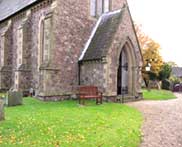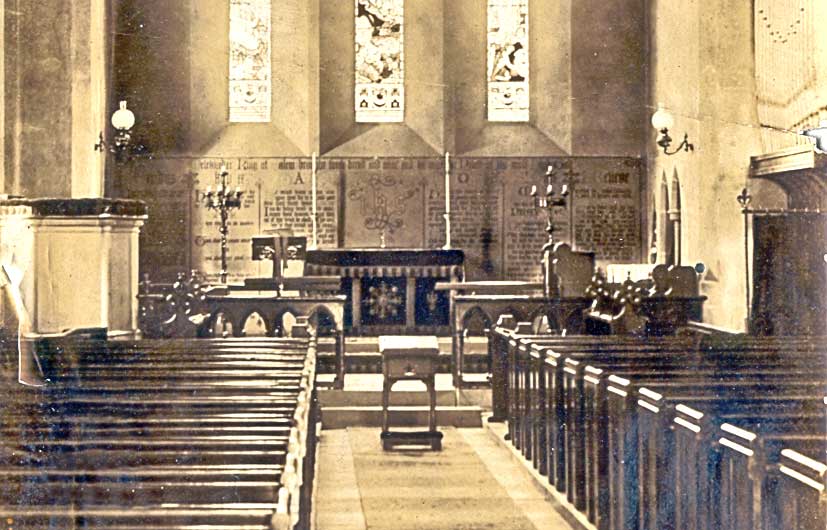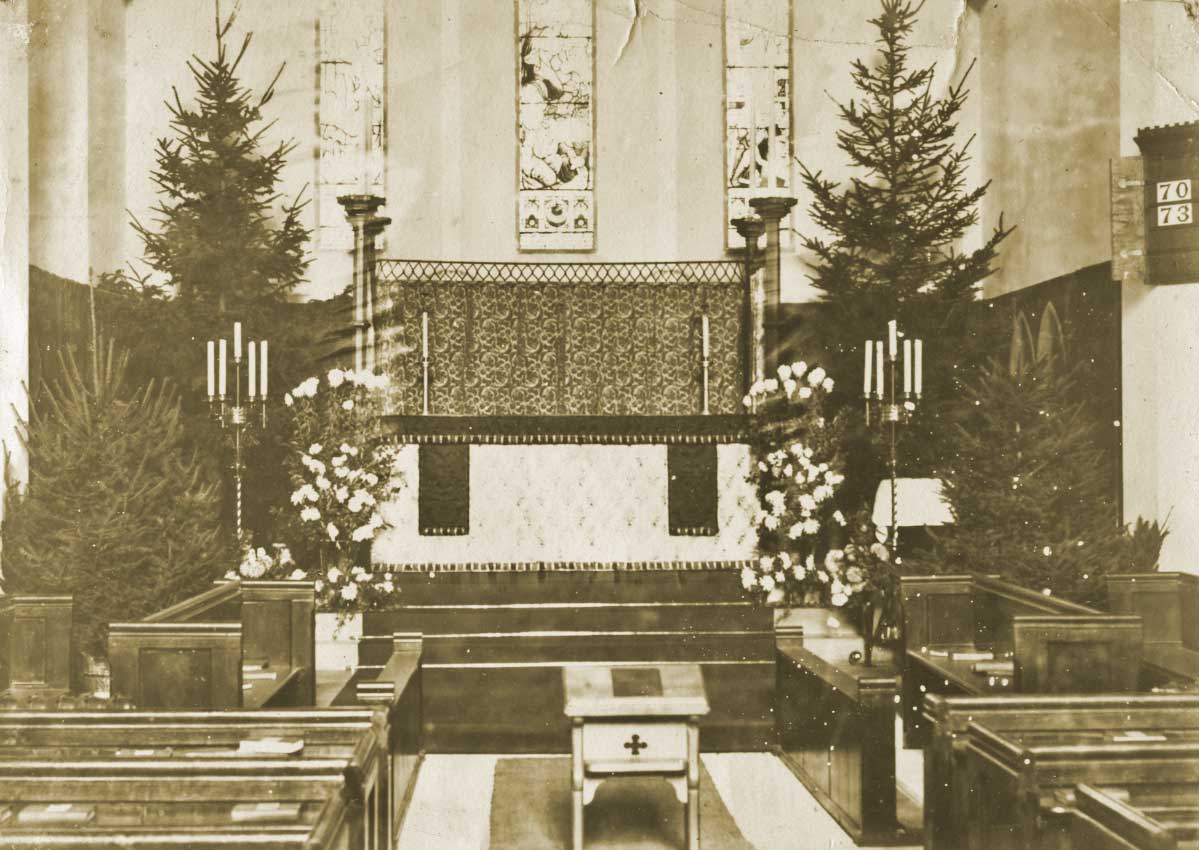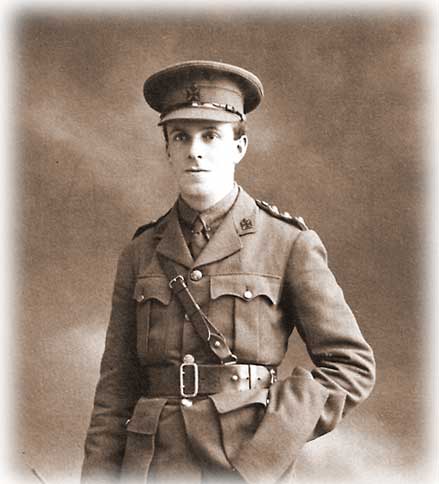
Guarlford St Mary's
Welcome to St Mary's Guarlford pastHere are some photos of the church interior as it was about 1900, followed by a short biography of Revd Frederick Newson who was Rector of Guarlford from 1913 to 1964. Church interior circa 1900The photo below shows the interior of the church as it was about 1900. The interior of the early church must have seemed very austere at first, as the only furnishings were stone altar, pulpit and font, and there was no organ. The spaces between the narrow lancet windows of the nave were filled with scriptural sentences in red, purple and gold. These were described as "gaudy" by John Noakes, 'The Rambler,' writing about his visit to the church in 1845; but they must soon have been painted over, as the earliest photographs show the walls as plain except for the east wall where the Ten Commandments flanked the altar. These were later covered by the oak panelling and reredos, which were the gift of churchwarden John Henry Stapleton and his wife Sarah Stapleton. This is commemorated on a small brass plaque near the vestry door.
St Mary Guarlford about 1900
Extensive alterations to the church building were made in 1906.The photo below, taken a little closer to the altar, shows the interior of the church, at Christmas, just before the Great War. Note the oak panelling now covering the inscriptions behind the altar and the pews that have been moved to provide the choir stalls.
St Mary Guarlford at Christmas, circa 1910
Out of picture is the magnificent carved oak pulpit, which replaced the original stone one - a memorial to Revd J B Wathen; it was dedicated on 11th December 1906, and was paid for by public subscriptions. The Revd Hubert Jones was Rector from 1905 to 1913. One of his first acts was to join in a collaborative project with the parishes of Madresfield and Newland to produce a monthly combined parish magazine, each parish having separate pages dedicated to its own events and matters. Each issue cost one penny, and initially Guarlford had 100 subscribers. He also enlisted the assistance of 'The Sisters of the Holy Name', Malvern Link who sent Sisters to work at Guarlford where they held mothers' meetings and classes. In 1910, Hubert Jones took sabbatical leave and travelled on mission to New Zealand. To maintain contact with his parishioners while on his travels, he sent letters from Canada, Hawaii, and various New Zealand locations for publication in the parish magazine. In 1910, this must have been quite a journey. In 1913, he moved to Hanley Castle, but came back in 1914 for about sixteen months to take services in the absence of Revd Newson on Army Chaplain duties. Later, he also served as an Army Chaplain. Revd Newson
At the time of writing, there are many people living with their own affectionate memories of Revd and Mrs Newson and, consequently, a fuller picture emerges of the impact this couple had on village life in Guarlford. It is of a dynamic couple who, like their predecessors, were totally committed to the pastoral care of the people of Guarlford and were fully involved in all aspects of village life and beyond. The Rectory had an ever-open door, but in the midst of their busy lives they also raised four children of their own as well as taking in as many as twenty evacuees during the Second World War. In the early years, Revd Newson travelled round the parish on a 'Red Indian' motor-cycle and sidecar, and on one occasion he ended up in the pond outside Grange Farm. Mrs Frances Newson also used the motorcycle combination and would frequently offer lifts in the sidecar. She could often be heard singing at the top of her voice as she sped along the country lanes. Later, they changed to pony and trap, and Revd Newson would be seen in the Glebe Field trying to catch the pony. Finally, he changed to a motor car which, needless to say, was freely available for the benefit of all. There are numerous stories of the kindness and generosity of Revd Newson, even though he was a man of very limited means. He would often pay off the debts of those parishioners who found themselves in dire circumstances such as risk of eviction, even on one occasion selling his own furniture to do so. If parishioners appeared in court, he would often be there, using his legal training to defend them. He had a great sense of fun; he enjoyed arranging and acting in amateur dramatics, and his concerts in the village hall were always very popular. At the annual Harvest Supper, he provided much of the entertainment himself - always singing 'Widdecombe Fair'. His church services had a relaxed air of informality. For well over forty years, he would play the organ for the hymns as well as conduct the service; and he rarely used the pulpit for his sermons, preferring to stand by the front pews. Often he would rest one foot on the pew and reminisce at length, until a discreet cough from Mrs Newson brought him back to the text. There is a poignant minute from the PCC meeting of March, 1964, when the PCC requested that he continue to play the organ for as long as his failing eyesight allowed - but sadly it was not to be for long. Eventually in 1964, fading eyesight and infirmity forced Revd Newson to reluctantly resign the living at Guarlford and he and his wife retired to Newland. He died the following year and is buried just opposite the church door at Guarlford. Extracted from chapter 5 of the Guarlford Story |


 The appointment of the Revd Frederick Newson as Rector in 1913 at
the age of thirty was the start of an incumbency, which, apart from
October 1914 to February 1916 when he was away performing his duties
(some in France) as an Army Chaplain, was to last for over half a
century.
The appointment of the Revd Frederick Newson as Rector in 1913 at
the age of thirty was the start of an incumbency, which, apart from
October 1914 to February 1916 when he was away performing his duties
(some in France) as an Army Chaplain, was to last for over half a
century.